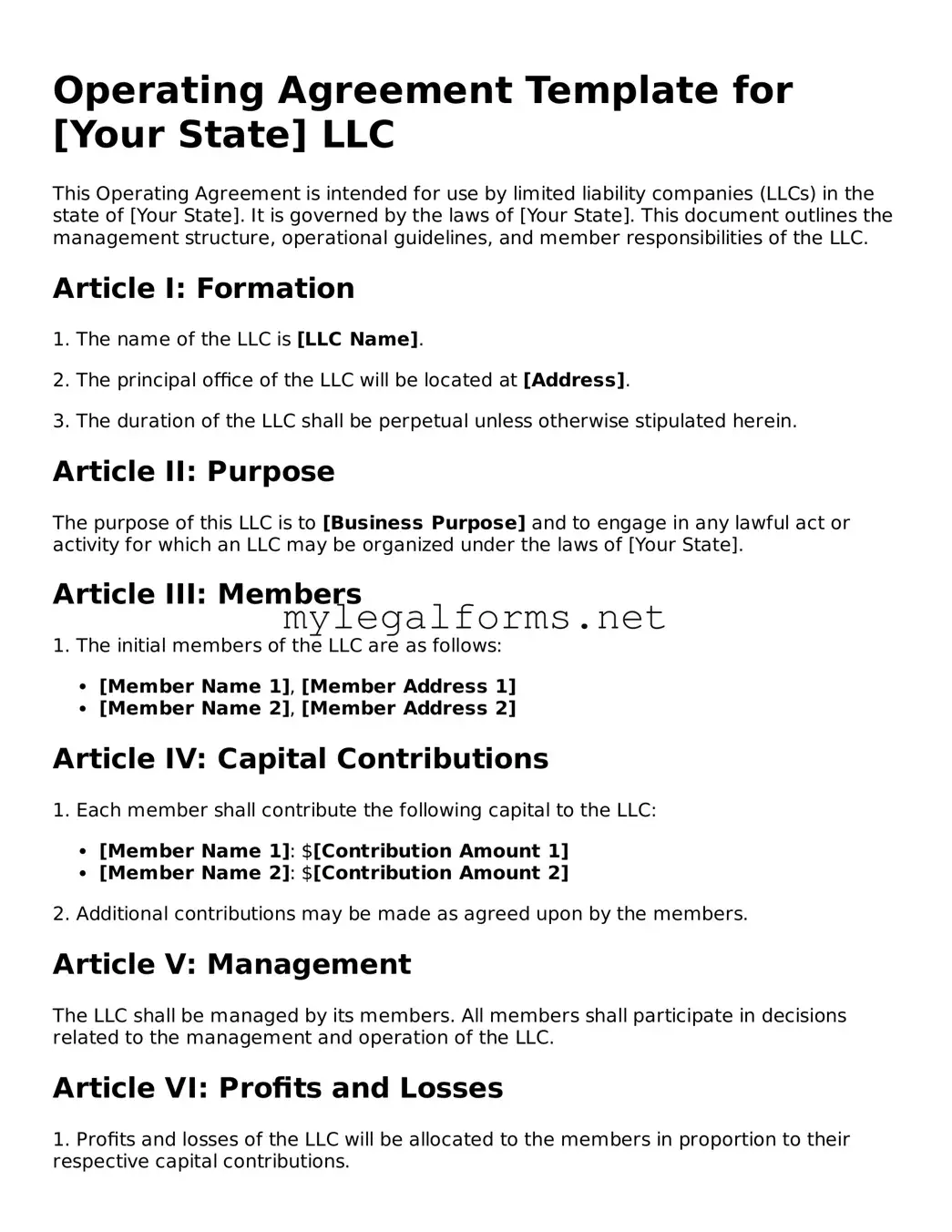Operating Agreement Template for [Your State] LLC
This Operating Agreement is intended for use by limited liability companies (LLCs) in the state of [Your State]. It is governed by the laws of [Your State]. This document outlines the management structure, operational guidelines, and member responsibilities of the LLC.
Article I: Formation
1. The name of the LLC is [LLC Name].
2. The principal office of the LLC will be located at [Address].
3. The duration of the LLC shall be perpetual unless otherwise stipulated herein.
Article II: Purpose
The purpose of this LLC is to [Business Purpose] and to engage in any lawful act or activity for which an LLC may be organized under the laws of [Your State].
Article III: Members
1. The initial members of the LLC are as follows:
- [Member Name 1], [Member Address 1]
- [Member Name 2], [Member Address 2]
Article IV: Capital Contributions
1. Each member shall contribute the following capital to the LLC:
- [Member Name 1]: $[Contribution Amount 1]
- [Member Name 2]: $[Contribution Amount 2]
2. Additional contributions may be made as agreed upon by the members.
Article V: Management
The LLC shall be managed by its members. All members shall participate in decisions related to the management and operation of the LLC.
Article VI: Profits and Losses
1. Profits and losses of the LLC will be allocated to the members in proportion to their respective capital contributions.
2. Distributions will be made as determined by the members in accordance with their ownership percentage.
Article VII: Meetings
1. Regular meetings of the members shall be held at least annually.
2. Special meetings may be called by any member upon reasonable notice to the other members.
Article VIII: Amendments
This Operating Agreement may be amended only by a written agreement signed by all members.
Article IX: Miscellaneous
1. This agreement shall be governed by the laws of [Your State].
2. If any provision of this Operating Agreement is deemed invalid or unenforceable, the remaining provisions shall continue in full force and effect.
Signatures
By signing below, the members agree to abide by the terms of this Operating Agreement:
_____________________________ [Member Name 1]
Date: _______________________
_____________________________ [Member Name 2]
Date: _______________________
